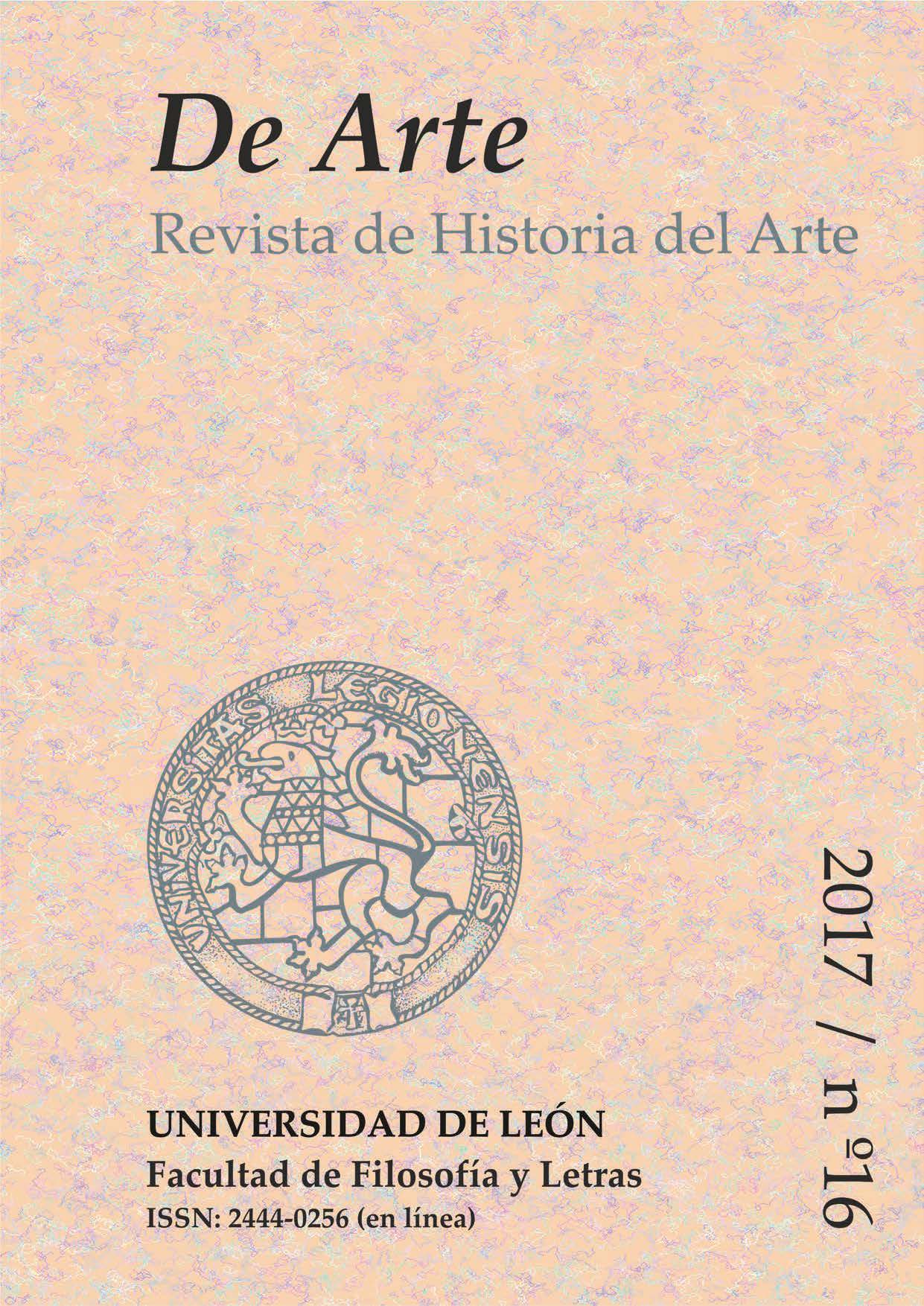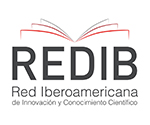Inmaterialities. Problems of conservation of new media art
DOI:
https://doi.org/10.18002/da.v0i16.4974Keywords:
New media art, Conservation, Inmaterial heritage, Contemporary art, Digital art.Abstract
The arrival of new digital media has meant the end of the trend toward dematerialization started at
the beginning of the 20th century. Because of this fact, artistic creations make the information burden a priority compared
to any other physical element. Media have been reduced to mere materializers of the works. Early obsolescence of new
technologies focus the question on the possible strategies of the conservation of works for the future. Digital heritage
produced today is in an unceasing danger of loss. Therefore, the role of the institution must be redefined. The museum is
not going to be a storehouse for dying works of art anymore, on the contrary it will become a main core that must keep
the process of communication open to the public-user.
Downloads
Métricas alternativas
References
BIBLIOGRAFÍA
ALSINA, P. y HOFMAN, V., “Agencia, y Materialidad en la Documentación del Arte de los Medios”, Icono 14 (12), 2014, pp. 56-69.
AUGÉ, M., Los no lugares: espacios del anonimato, Barcelona, 1993.
AUSTRALIAN NATIONAL LIBRARY, Rules for the preservation of Digital Heritage, París, 2003.
BAUDRILLARD, J., Cultura y simulacro, Barcelona, 1993.
BRAND, S., “Escaping the Digital Dark Age”, Library Journal, 124 (2), 1999, pp. 46-48.
BREA, J. L., Cultura RAM, Barcelona, 2007.
CARRILLO CASTILLO, J., “El museo como archivo”, Artnodes: revista de arte, ciencia y tecnología, 2010, nº 10, pp. 18-21.
DELEUZE, G. y GUATTARI, F., Mil pesetas: capitalismo y esquizofrenia, Valencia, 1994.
DELGADO GÓMEZ, A., “El arte digital como estudio de caso de los problemas asociados a la conservación de documentos de archivo en el actual entorno tecnológico”, Scire: representación y organización del conocimiento, 14 (2), 2008, pp. 65-85.
DEPOCAS, A., IPPOLITO, J. y JONES, C. (eds.), The variable media approach: permanence through change, New York, 2003.
ECO, U., Obra abierta: forma e indeterminación en el arte contemporáneo, Barcelona, 1962.
FOUCAULT, M., Las palabras y las cosas: una arqueología de las ciencias humanas, Buenos Aires, 1968.
GARCÍA MORALES, L., “Heterotopía Digital”, en J.L. CRESPO FAJARDO (coord.), Discursos sobre arte digital, Málaga, 2012, pp. 98-114.
GARCÍA MORALES, L. y MONTERO VILAR, P., “Ergonomía de la obsolescencia”, en Conservación de arte contemporáneo: 14 jornada, Madrid, 2013, pp. 11-21.
GROYS, B., “Time-based art”, RES: Anthropology and Aesthetics, 59 (1), 2011, pp. 337-341.
GRUESO OTALO, G., “Arte de Internet y las instituciones artísticas: Problemáticas de adquisición, documentación, exposición, conservación y restauración del arte de internet”, en Conservación de arte contemporáneo: 14 jornada, Madrid, 2013, pp. 43-54.
GUTIÉRREZ COLINO, V. y GARCÍA MORALES, L., “Resiliencia tecnológica”, Arte y políticas de identidad, Vol. 10: Arte y sostenibilidad, 2014, pp.135-154.
HUHTAMO, E. y PARIKKA, J. (eds.), Media archaeology: Approaches, applications, and implications, Berkeley, 2011.
IPPOLITO, J., “Accommodating the unpredictable: The variable media questionnaire”, en A. DEPOCAS, J. IPPOLITO y C. JONES (eds.), Permanence through change: The variable media approach, New York, 2003, pp. 47-53.
LEVIS, D., Arte y computadoras: del pigmento al bit, Buenos Aires, 2001.
LIPPARD, L. R., Six years: the dematerialization of the art object from 1966 to 1972, Berkeley, 1973.
McLUHAN, M., Contraexplosión, Buenos Aires, 1971.
MANOVICH, L., “Database as symbolic form”, Convergence, 5(2), 1999, pp. 80-99.
MANOVICH, L., The language of new media, Cambridge, 2001.
MANOVICH, L., “The anti-sublime ideal in data art”, 2002, consultado el 14 de marzo de 2017. URL: http://www. manovich. net/DOCS/data_art. doc.
MANOVICH, L., “The practice of everyday (media) life: From mass consumption to mass cultural production”, Critical Inquiry, 35(2), 2009, pp. 319-331.
MANOVICH, L., Software takes command, New York, 2013.
MARCHÁN FIZ, S., Del arte objetual al arte de concepto, Madrid, 1986.
MORGAN, R. C., Del arte a la idea, Madrid, 2003.
PAUL, C., Digital art, London, 2003.
RINEHART, R., “The media art notation system: documenting and preserving digital/media art”, Leonardo, 40 (2), 2007, pp. 181-187.
ROBERTSON, R., “Glocalization: Time-space and homogeneity-heterogeneity”, Global modernities, 25, 1995, pp. 44.
RODRÍGUEZ IBÁÑEZ, M., Cómo la red ha cambiado el artel, Gijón, 2012.
STERLING, B., “Digital decay”, en A. DEPOCAS, J. IPPOLITO, y C. JONES (eds.), The variable media approach: permanence through change, New York, 2003, pp. 10-22.
STEVENS, M., “Conformarse con la nada: la materialización de lo digital”, Artnodes, 12, 2012, pp. 48-53.
UNESCO, Convention for the Safeguarding of the Intangible Cultural Heritage, Paris, 2003.
VERGO, P. (ed.), New Museology, London, 1997.
VIRILIO, P., Estética de la desaparición, Barcelona, 1988.
ZIELINSKI, S., Arqueología de los medios, Bogotá, 2012.
ZUMMER, T., “Anexos de voz”, Artnodes, 12, 2012, pp. 54-61.
Downloads
Published
Issue
Section
License
Copyright (c) 2017 Luis David Rivero Moreno

This work is licensed under a Creative Commons Attribution-NonCommercial-ShareAlike 4.0 International License.
Los autores que publican en esta revista están de acuerdo con los siguientes términos:
- Los autores ceden de forma no exclusiva los derechos de explotación (reproducción, distribución, comunicación pública, transformación) a la Universidad de León, por lo que pueden establecer, por separado, acuerdos adicionales para la distribución no exclusiva de la versión de la obra publicada en la revista (por ejemplo, alojarlo en un repositorio institucional o publicarlo en un libro), con un reconocimiento de su publicación inicial en esta revista.
- Este trabajo se encuentra bajo la Creative Commons Attribution-NonCommercial-ShareAlike 4.0 International License. Puede consultarse desde aquí la versión informativa y el texto legal de la licencia.
- Se permite y se anima a los autores a difundir electrónicamente las versiones pre-print (versión antes de ser evaluada) y/o post-print (versión evaluada y aceptada para su publicación) de sus obras antes de su publicación, ya que favorece su circulación y difusión más temprana y con ello un posible aumento en su citación y alcance entre la comunidad académica.









